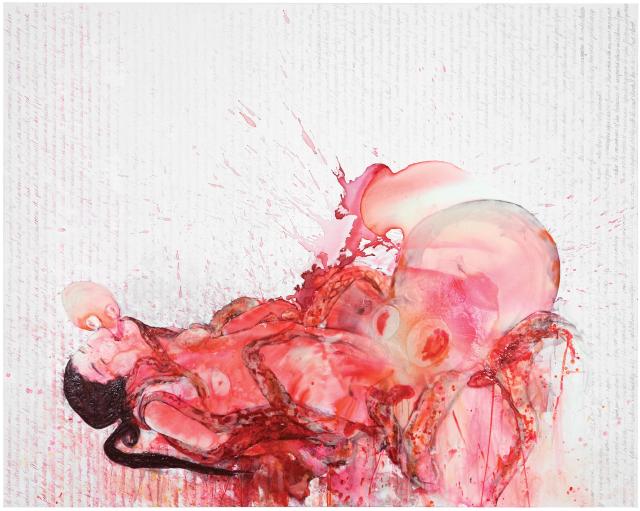Andrew Frost discovers a cache of paintings at the Museum of Contemporary Art – and a few of them aren’t too bad…
It was often claimed by cynics that the rise of video art in the last decade had as much to do with the logistics of mounting a large exhibition of international contemporary art as it had to do with any other factor. Indeed, it was just so much easier and cheaper to pop a DVD into a padded post bag and mail it off to some distant biennale, triennial or art fair than it was to ship a large-scale painting. Such was the predominance of works that were made on the spot, mailed in, reconstructed or pulled from collections of host galleries and museums in Biennales of recent years that many wondered what had ever happened to the humble practice of painting. It was all the rage in the 1980s. Meanwhile, the slump in interest in video art left a rather large gap in the primary and secondary market internationally that has been filled – since around 2005 – with a resurgent interest in painting.
Penny Siopis, Ambush, 2008.
Ink, glue and oil on canvas, 200 x 250 cm.
Courtesy the artist and Michael Stevenson, Cape Town Photograph: Mario Todeschini
David Elliott testily refuted the suggestion that his Biennale had anything at all to do with the market, but it’s interesting to note the unusually large number of wall works in BOS2010 – from Fiona Pardington’s somber photos of islander warrior chiefs, to Annie Pootoogook’s child-like drawings to the rather fantastic paintings of South African artist Penny Siopis. Maybe a change is in the air, perhaps paintings were always in the BOS but spread out across all those far-flung venues, but crammed together in the Museum of Contemporary Art in an-almost salon hang, painting makes its presence felt.
Siopis’s Ambush references Hokusai’s The Dream of The Fisherman’s Wife [1820] an erotic woodcut that depicts the titular wife being ravaged by an octopus with serrated suckers better suited for advanced practices of cunnilingus than the rough hands of the hapless husband. [Read more on Wiki ]
The Sipois re-imagining updates the 19th century image via an apparently violent manga-style collision between woman and beast, the red paint suggesting that the technical aspects of a cephalopod-human interaction would be painful at best, terminal at worst. The Japanese script, so heavy in the original, is a faded backdrop in the Sipois’s work, foregrounding the form and shape of the bodies, but also creating a kind of palimpsest where the reversioning of Hokusai echoes through the layers. The pleasure – if one may call it that – of the Siopis painting is in how the paint acts as an analogue for blood but also, with its swirls and pools, the paint application flirts with abstraction.
Ambush is a curious addition to the Biennale, especially given how might speculate how it relates to the one of half dozen or so thematics that Elliott has dreamt up for BOS2010. Looking at the painting reminds one how universal art historical images are, thanks in part to the web, but also to the pervasiveness of art education. Reading the slim notes of Siopis in the free giveaway guide, we’re told that the artist “engages with the intersection of biography and autobiography by revisiting certain parts of South Africa’s history and her main focus is on the aesthetics of vulnerability – how an image can relate to power and oppression.”
In Elliott’s formulation, the BOS2010 looks at how artists make folky riffs on ‘world culture’ to make sense of their immediate surroundings. By some quirk of timing Siopis’s painting arrives in Sydney as a timely reminder that art historical works can be recontextualised in highly individual and localised contexts – and not be loaded with the false expectation that they need to explain themselves.


Pingback: Tweets that mention BOS2010: Penny Siopis | -- Topsy.com
I think its rather good – I just wonder if the ambush relates more to the splodges looking like an amorous occy, then refined, or was it intentional?